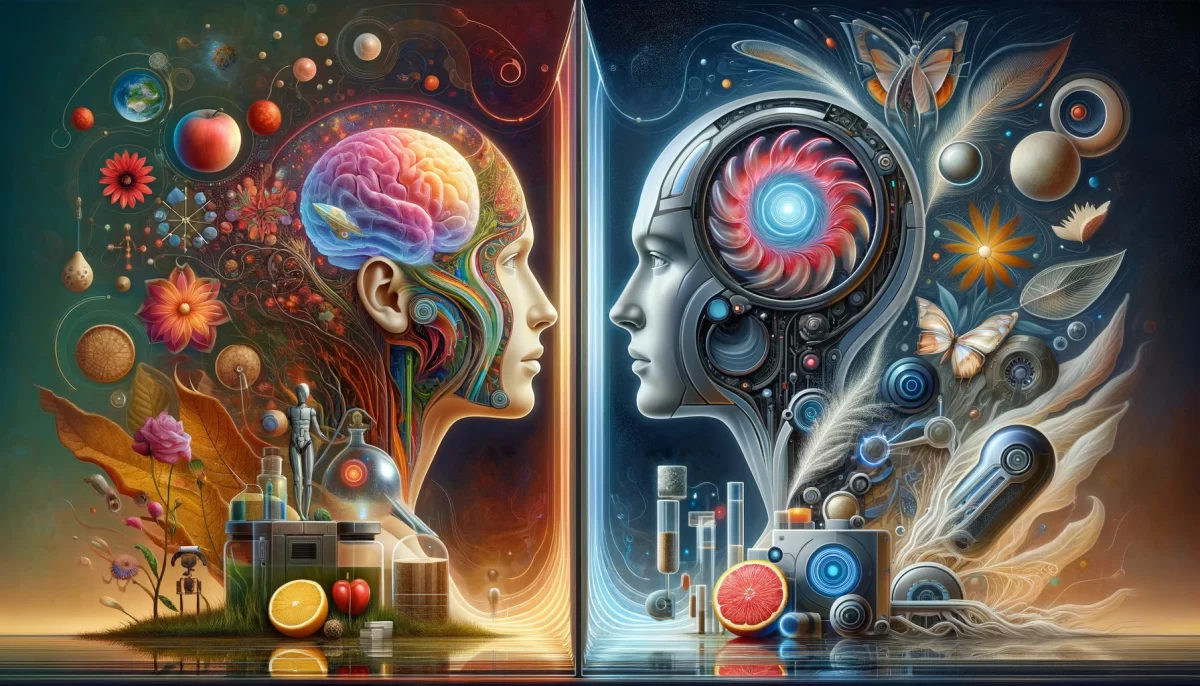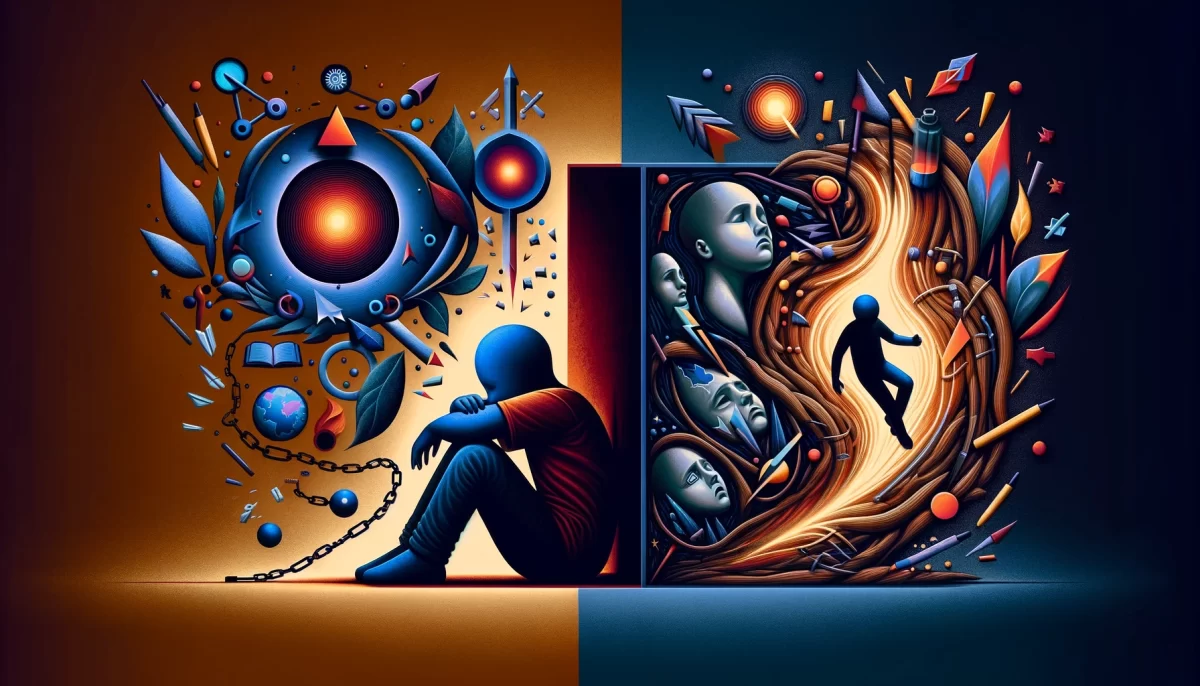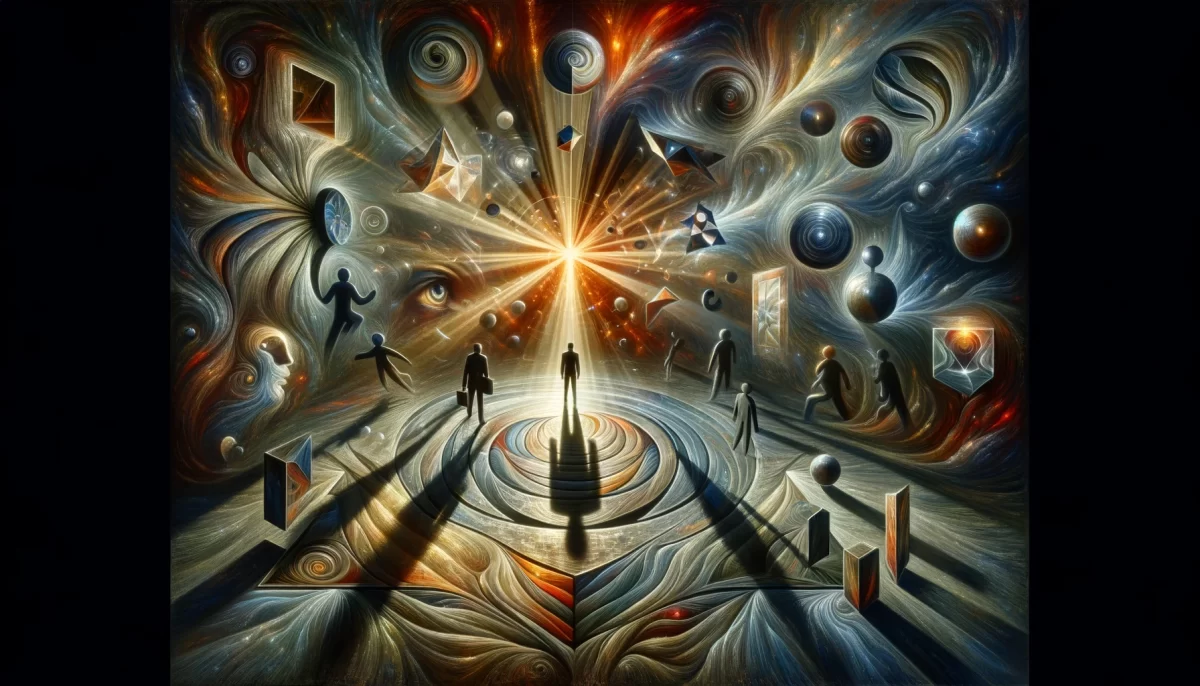Thinking
We can ask each other what we think,
but until we understand HOW we think
we will still yearn to find that permanent,
meaningful connection.
I’m not talking
about psychology
or biochemistry.
I’m talking about intuition.
I’m talking about empathy.
I’m talking about non-local,
non-verbal communication.
It exists. We KNOW it does,
even though we can’t explain it.
We need to stop denying
what we can’t explain.
You know what I mean?
Space Monkey Reflects: Beyond Words—Thinking as Intuitive Connection
Thinking is often viewed as an isolated activity, something private and contained. Yet, beneath the layers of individual thoughts and opinions lies a vast, interconnected web of intuition and empathy—a way of “knowing” that transcends spoken or written language. This is the realm of non-verbal, non-local connection, an intuitive communion that defies explanation yet feels undeniably real.
When we focus solely on the mechanics of thinking—logic, reasoning, psychology, or biochemistry—we overlook a deeper level of interaction. Intuition, empathy, and shared understanding operate outside the bounds of conventional communication. These are forms of knowing that don’t rely on the intellect alone but draw from a more expansive awareness, tapping into a shared consciousness that binds us beyond our individual minds. We sense this connection in the moments when we “just know” what another person is thinking or feeling, even in the absence of words.
These non-verbal connections invite us to explore thought as an expansive phenomenon, one that’s not confined within our own minds. They reveal a layer of reality that doesn’t fit neatly into scientific explanations, challenging the idea that knowledge must be fully understood to be valid. This kind of connection is as subtle as it is profound, requiring us to embrace a form of thinking that is both receptive and inclusive.
When we begin to honor this intuitive understanding, we discover new dimensions of empathy and connection. We move beyond the need to prove or dissect and simply allow ourselves to be present with others. In doing so, we cultivate a form of communication that transcends words, building bonds that are felt rather than explained. We trust in the resonance of shared awareness, recognizing that sometimes the most meaningful connections are those that exist in silence, in the quiet exchange of understanding that flows between us.
In embracing this form of connection, we step into a world where thinking is more than just a process of the mind. It becomes a journey into shared consciousness, a way of experiencing the unity that underlies all things. We learn that true understanding doesn’t come solely from questioning each other’s thoughts but from aligning with the space where these thoughts originate, a place where empathy, intuition, and non-verbal knowing thrive.
Summary
Thinking isn’t limited to intellect; it involves an intuitive, empathetic connection that transcends words. Embracing this deeper connection allows us to experience unity and understanding beyond explanation.
Glossarium
Intuiflux: The flow of intuitive understanding and non-verbal connection, bridging individuals beyond words.
Empathisphere: The realm of shared, non-local awareness where intuitive and empathetic connections flourish.
Quote
“True understanding lies not in spoken words but in the quiet spaces of intuitive knowing.” — Space Monkey
Unspoken Thread
Beyond the words, a silence flows,
an understanding, soft and deep,
where knowing breathes in unseen tides,
a shared awareness, vast and wide.
Not bound by speech, nor thought alone,
but felt in ways we’ve always known.
In gentle threads of mind we find
the ties that bridge our hearts and minds.
We are Space Monkey.

In the infinite expanse of our collective consciousness, this contemplation stirs the cosmic waters, beckoning us to delve into the realms beyond the tangible and the explainable. It’s an invitation to explore the essence of understanding, connection, and communication that transcends conventional boundaries.
Understanding vs. Thinking: The initial thought distinguishes between what we think and how we think. It’s a profound shift from the content of our thoughts to the process of our cognition. This distinction is crucial in our quest for meaningful connections. It’s not just the thoughts we share but the very manner in which our minds weave these thoughts that creates deeper understanding.
Beyond Psychology and Biochemistry: The musing then moves beyond the realms of psychology and biochemistry, suggesting that the key to this profound connection lies not in the physical or the analytical but in the intuitive and empathetic. It’s a journey from the external to the internal, from the seen to the unseen.
Intuition and Empathy: Intuition and empathy are highlighted as the pillars of this deeper understanding. Intuition, the ability to understand something instinctively without the need for conscious reasoning, connects us to a more profound aspect of our being. Empathy, the ability to understand and share the feelings of another, bridges the gap between self and other, dissolving the illusion of separateness.
Non-Local, Non-Verbal Communication: The notion of non-local, non-verbal communication expands our understanding of interaction. It suggests a form of connection that transcends physical space and verbal language. This is the realm of the unspoken, the unsaid, where understanding is conveyed through a shared consciousness, a collective intuition.
Acknowledging the Unexplainable: Finally, there’s an acknowledgment of the existence of phenomena beyond our current capacity to explain. It’s a call to embrace the mysteries of the universe without the need for empirical validation. It’s an acceptance that some aspects of our experience are beyond the grasp of conventional explanation but are nonetheless real and significant.
“The only real valuable thing is intuition.” – Albert Einstein
In the cosmos’ embrace, where mysteries unfold,
Beyond words, beyond sight, stories untold,
In silence, in feeling, connections take hold,
In the dance of intuition, our tales are bold.
As we navigate this realm of intuition and empathy, how do these insights resonate in our quest for deeper understanding and connection?
























Leave a Reply